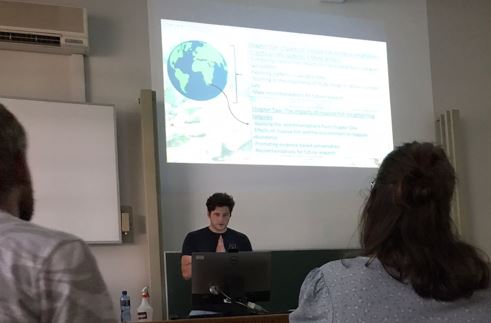New information about authorship for sale
From time to time new publications about publishing and writing appear and I make a note that I will need to update my book chapters accordingly. A preprint on rXiv by Abalkina (2022) prompted this particular revision to How to Publish in Biological Sciences. You can find the full book chapter here: When should you be an author?
When William Blake wrote about the dark satanic mills, he wasn't thinking of the paper mills (see here) that are now a growing feature of academic life. However, the description seems rather apt. Like other aspects of academic publishing, when money is involved there are forever increasing ways in which integrity in academic publishing is compromised.
Paper Mills
The concept of a paper mill is rather different from ghost authors or even salami-slicing (Part IV). Paper mills involve third parties, often not included on the author line acting as intermediaries. A paper mill may either be producing material for publication from scratch: i.e. companies that specialise in producing content that will pass peer review for those who want to buy authorship. Or they may be third party organisations that sell a position in the author line of a legitimate paper. Given that the world of paper mills is particularly shady, there is likely no hard distinction between these types of paper mill but a large grey blur between completely fake at one end and legitimate novel research (including non-legitimate authors) at the other.
Fabrication of research
Writing fake research, or that which contains fake results and data, is covered in another part of this book (see Part IV). Those that produce the manuscripts generally rewrite text and pull protocols from manuscripts that are already published. Results are often images that have already been published and/or are manipulated to suit the content (Else & Van Noorden, 2021). Hence, paper mills are a systematic and deliberate manipulation of the publication process (see Teixeira da Silva, 2021).
Read More:
Abalkina A. 2022. Publication and collaboration anomalies in academic papers originating from a paper mill: Evidence from a Russia-based paper mill. DOI: 10.48550/arXiv.2112.13322.
Else H. 2023. Multimillion-dollar trade in paper authorships alarms publishers. Nature 613:617–618. DOI: 10.1038/d41586-023-00062-9.
Else H, Van Noorden R. 2021. The fight against fake-paper factories that churn out sham science. Nature 591:516–519. DOI: 10.1038/d41586-021-00733-5.
Hvistendahl M. 2013. China’s Publication Bazaar. Science 342:1035–1039. DOI: 10.1126/science.342.6162.1035.
Teixeira da Silva JA. 2021. Abuse of ORCID’s weaknesses by authors who use paper mills. Scientometrics. DOI: 10.1007/s11192-021-03996-x.


